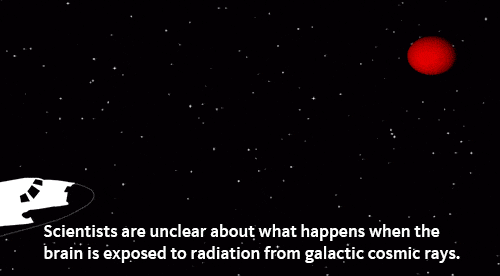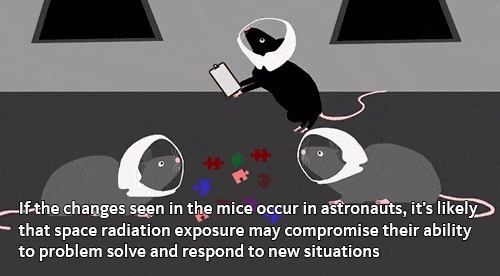Researchers at University of California Irvine exposed mice to radiation similar to the cosmic rays that permeate space and found the animals experienced declines in cognition and changes in the structure and integrity of brain nerve cells and the synapses where nerve impulses are sent and received. The mice became easily confused and lost their tendency to explore new environments. Similar cognitive impairments are likely to be felt by astronauts traveling to Mars, according to the researchers. Even with shielding, the effects of cosmic rays exposure are sure to be noticed, considering the journey to Mars lasts six to eight months. This without counting the time spent on the red planet and the journey back home.
“Astronauts may incur cognitive impairments that lead to performance decrements, confusion, increased anxiety and longer-term problems with cognitive health,” said University of California, Irvine radiation oncology professor Charles Limoli, whose study appears in the journal Science Advances.
In August 1912, Austrian physicist Victor Hess made a historic balloon flight that opened a new window on matter in the universe. As he ascended to 5300 metres, he measured the rate of ionization in the atmosphere and found that it increased to some three times that at sea level. He concluded that penetrating radiation was entering the atmosphere from above. He had discovered cosmic rays. Galactic cosmic rays can be found everywhere in the Universe. They’re the remnants of supernovas – exploding stars, which release huge amounts of energy. Luckily, the Earth’s atmosphere acts like a shield against it, but in space it’s all free to roam and wreck havoc to life.
To study what kind of effects such exposure would have, the UC Irvine researchers genetically modified mice to have green fluorescent neurons. This aided structural analysis. The mice were exposed to the cosmic rays at the NASA Space Radiation Laboratory at the Brookhaven National Laboratory in New York and then analyzed six weeks later.
Besides the clear structural damage inferred, the researchers noted that the mice performed poorly on learning and memory tests. They were also sluggish and less curious.
“Previous studies show synaptic impairment or loss of synapses is an early and invariant feature of Alzheimer’s disease, and there is a strong correlation between the extent of synapse loss and the severity of dementia,” said University of California, Irvine neuroscientist Vipan Kumar Parihar.
This definitely sounds like bad news for interplanetary missions where long-time exposure to cosmic rays is certain. Of course, there are ways to shield against cosmic rays. One creative solution actually involves lining a spacecraft’s walls with human feces to protect against radiation. The brain-dulling particles would still get on board, though. “There is really no escaping them,” Limoli said.











